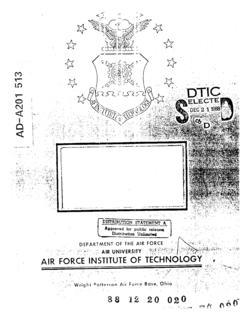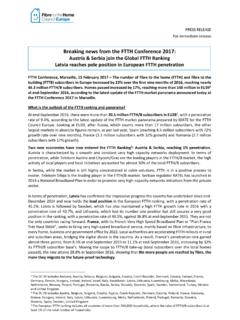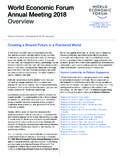Transcription of Methods for Slope Angle and Slope Length …
1 This paper was published in the journal Cartography Visit for more information. Full reference: Hickey, R., 2000, Slope Angle and Slope Length Solutions for GIS. Cartography, v. 29, no. 1, pp. 1 - 8. Slope Angle and Slope Length Solutions for GIS. Robert Hickey School of Spatial Sciences Curtin University of Technology GPO Box U 1987. Perth 6001, Western Australia ABSTRACT. The Universal Soil Loss Equation has been used for a number of years to estimate soil erosion. One of its parameters is Slope Length , however, Slope Length has traditionally been estimated for large areas rather than calculated. Using data from regular grid DEMs, a method is described in this paper for calculating the cumulative downhill Slope Length . In addition, Methods for calculating Slope Angle and downhill direction (aspect) are defined.
2 Details of the algorithm and its associated advantages and disadvantages are discussed. INTRODUCTION. Slope Angle and Slope Length calculations are an integral part of many environmental analyses, particularly erosion models. Unfortunately, there are problems with most of the Methods currently available for the calculation of these parameters. Typical Slope Angle computation Methods calculate an average Slope based upon, roughly, a 3x3 neighbourhood (Fairfield and Leymarie 1991). The maximum Slope method calculates the maximum Angle to or from the centre cell the result of this being much higher overall Slope Angle estimates (and resulting erosion estimates). The proposed solution to these 2. problems (averaging or overestimating) is to calculate maximum downhill Slope Angle .
3 Constraining the Slope Angle calculations to one cell Length (or cell lengths in the diagonal) in a downhill direction. This Slope Angle also corresponds to the direction of overland flow from the cell in question. For more information regarding different Slope Angle calculations, see Dunn and Hickey (1998) and Srinivasan and Engel (1991). Slope Length calculations are often the most problematic of the erosion model parameters. The traditional method of calculation has been to use a regional estimate thereby converting a variable into a constant (Troeh, et al., 1991). Most recent work has centred around using either unit stream power (Moore and Burch, 1986) or upslope area (Desmet and Govers, 1996) as a surrogate for Slope Length . The methodology described in this paper involves calculating Slope Length from high points (ridges/peaks) along the direction of maximum downhill Slope Angle (flowdirection).
4 Converging flows and areas of deposition are accounted for in the algorithm. EROSION MODELLING USING THE USLE. The Universal Soil Loss Equation (USLE) has been used for a number of years to predict soil erosion rates. In its traditional form, the USLE is given by the following equation (Wischmeier and Smith, 1978): A=RKLSCP. Where A is the average annual soil loss per unit area R is the rainfall and runoff factor K is the soil erodability factor L is the Slope Length factor S is the Slope steepness factor C is the cover and management factor P is the support practice factor The L and S factors are commonly combined as LS and referred to as the Slope factor (Troeh, et , 1991). This paper will focus on generating the L and S factors from a digital elevation model (DEM) within a GIS.
5 The two inputs to the LS factor are cumulative Slope Length and Slope Angle . 3. In recent years, soil erosion models more advanced than the USLE have been developed, including ANSWERS (Beasley and Huggins, 1991), AGNPS (Young et al., 1987), WEPP. (Laflen et al., 1991; Savabi, et al., 1995), and the USLE's replacement, RUSLE (Renard et al., 1997; Renard et al., 1991). It is important to note that all models include a Slope component and that the RUSLE, WEPP, and AGNPS models include a Slope Length component in their equations. Methods OF Slope Angle CALCULATION. Calculating Slope from a DEM is relatively simple, but care must be taken when selecting an algorithm. For example, the ARC/INFO GRID command, Slope , uses the quadratic surface algorithm by Srinivasan and Engel (1991) (ESRI, 1997); IDRISI's algorithm calculates maximum Slope , but only considers the four cardinal directions (N S E W) from a 3x3.
6 Neighbourhood (IDRISI, 1997). Other available algorithms include the neighbourhood method and the best fit plane method (Srinivasan and Engel, 1991). These, along with the quadratic surface method, examine the neighbourhood around an elevation cell and determine the Slope across the cell in question based upon at least four of the neighbour cells. As such, all three calculate an average Slope based upon, roughly, a 3x3 neighbourhood. The maximum Slope method calculates the maximum Angle to or from the centre cell the result of this being much higher overall Slope Angle estimates (and resulting erosion estimates) (Srinivasan and Engel, 1991; Srinivasan, et al., 1994; Dunn and Hickey, 1997). Given the limitations in the above Methods (averages across a 3x3 neighbourhood, maximum values, and only using cardinal directions), a compromise method was required to retain local variability without focusing entirely on maximum Slope angles.
7 This method is the maximum downhill Slope Angle which constrains the Slope Angle calculations to one cell Length (or cell lengths in the diagonal) in a downhill direction. It is similar to the maximum Slope method, but it includes a directional component -- angles are constrained to a downhill direction (uphill angles are calculated as having a negative Slope ). The obvious limitation with this method is negative Slope angles are produced when dealing with depressions in a DEM. A side benefit is that the Slope Angle also corresponds to the direction of overland flow from the cell in question (Dunn and Hickey, 1997). Computer code to calculate maximum downhill Slope Angle (and cumulative downhill 4. Slope Length ) are available for both Arc Info (AML format) and IDRISI (executable code).
8 They can be downloaded from ~ and are free. Methods OF Slope Length CALCULATION. Generating the LS values poses the largest problem in using the USLE (Griffin et al., 1988; Moore and Wilson, 1992; Renard, et. al., 1991), especially when applying it to real landscapes within a GIS (Griffin et al., 1988). Traditionally, the best estimates for L are obtained from field measurements, but these are rarely available or practical. Unfortunately, because of the lack of detailed Slope Length measurements or reliable software algorithms, regional average Slope Length values are often used (Cowen, 1993) thereby treating a variable as a constant. The particular algorithms that have been developed to calculate Slope Length include grid- based Methods (Hickey et al.)
9 , 1994; Hickey, 1994), unit stream power theory (Mitasova, 1993;. Mitasova, et al., 1996, Moore and Wilson, 1992; Moore and Burch, 1986), contributing area (Desmet and Govers, 1995; Desmet and Govers, 1996), and Cowen's (1993) study which developed the means to calculate cumulative downhill Slope Length from a TIN (triangular irregular network) within ARC/INFO. GRID-BASED ALGORITHM DESCRIPTION: The overall methodology for calculating the L and S factors is illustrated in Figure 1. The first requirement for the algorithm is a DEM, preferably a depressionless DEM. This is suggested for two reasons. First, true depressions are rare in nature, as such, depressions in DEMs are often errors. Second, when using the suggested maximum downhill Slope Angle algorithm, depressions will return negative Slope values.
10 This will eventually result in negative erosion estimates (deposition). AML code is available for ARC/INFO which eliminates all depressions (the FILL command in ARC/INFO GRID does not eliminate all depressions), unfortunately, no similar code is available for IDRISI. Once this has been completed, the maximum downhill Slope and the flowdirection are calculated from the DEM. It is important to note here that the flowdirection and the direction of maximum downhill Slope are the same. High points (local maxima) are designated by selecting those cells which have either no 5. flow entering them or in cases where both the cell in question and its input cell have a Slope Angle of zero. For accurate cumulative Slope Length values, the high points calculated by the model must correspond to true terrain high points.







